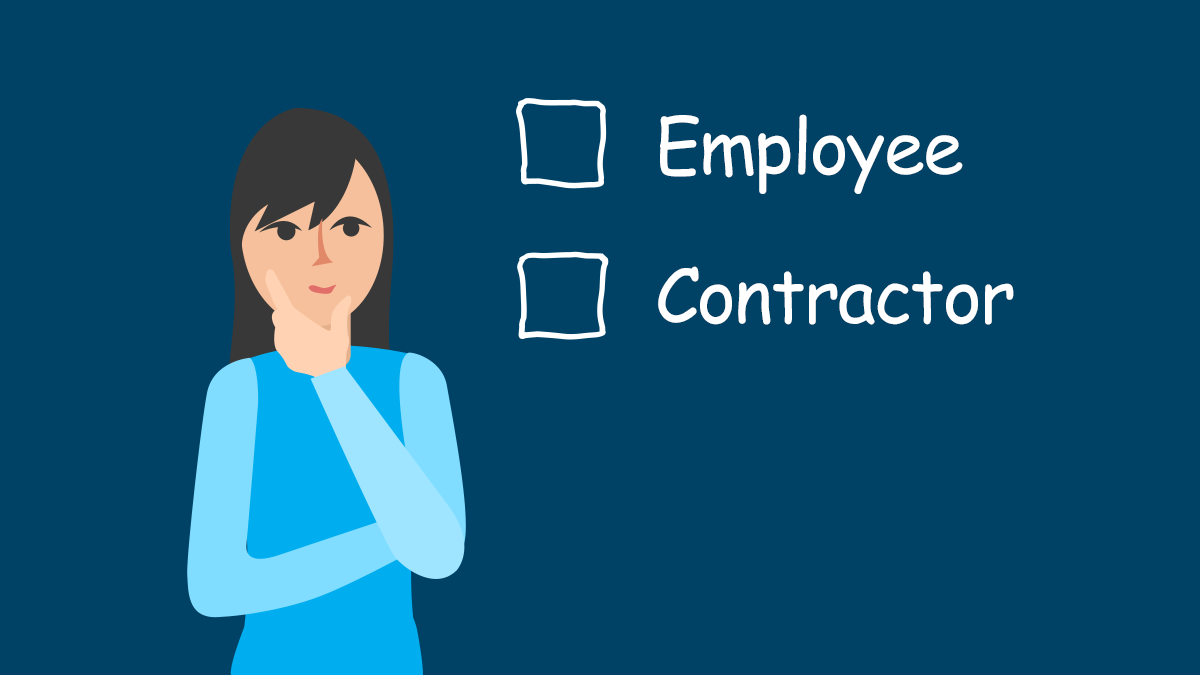eRank does not provide tax, legal or accounting advice. This material has been prepared for informational purposes only, and is not intended to provide, and should not be relied on for, tax, legal or accounting advice. You should consult your own tax, legal and accounting advisors.
This information applies to crafters in the United States of America (USA). However, crafters in other countries might find this information useful.
Your handmade business has grown to where you need help to keep up with the orders. Congratulations! You are definitely excited about the growth, but you are also unsure as to the next steps. You know you need to hire someone to help you with your business, but will this person work with you as a contractor or as an employee? What is the difference?

What is a Contractor?
If the person that works for you is classified as a Contractor, you will not be responsible for withholding and submitting payroll tax to either the federal or state governments. Also, you will not be required to pay unemployment tax or provide any benefits such as vacation, holiday, or sick pay. You only need to pay the Contractor for the work performed at the agreed-upon rate. If the person works more than 40 hours, the rate remains the same.
What is an Employee?
If you hire someone and classify that person as your Employee, you will need to register with both the federal and state governments for an employee identification number and withhold and submit payroll taxes to both at the rate and time scale indicated by each government. You may be required to pay unemployment tax based on your state’s requirements. If the person works more than 40 hours, you must pay them at 1.5 times their pay rate plus depending upon your state’s requirement. You may be required to pay additional amounts for working a holiday, weekend, or more than eight hours in a day.
How to Decide: Contractor or Employee?
After reading the definitions of each, it may seem easiest to hire a Contractor to help you as its classification requires a lot less paperwork and financial obligation. However, choosing to go this route for the sake of ease can be a dangerous path. You could find yourself in trouble with either your state or the federal revenue and/or labor departments. In the long run, if you misclassify your helper, you could face more paperwork and financial obligation in the way of penalties, interest, and other fines.
How can you decide and be sure that you are classifying your helper correctly? While there is no one accepted test among the federal and state agencies, the Internal Revenue Service (IRS) has some helpful guidelines. It will provide you with the correct classification or at least a good defense as to why you classified your helper as if you have if ever questioned. The guidelines are divided into three categories: behavioral, financial, and type of relationship.
1. Behavioral
Ask yourself if you will control how the employee performs the necessary tasks. If you specify that certain tools are to be used and the task is to be performed in a certain way, the helper is an Employee. If you specify a work location and specific work hours, the helper is an Employee. A Contractor is generally assigned a task with an expected completion date, and you would not specify how, when, or where the task is to be accomplished. You would tell the Contractor what you need, how many were needed, and when it should be completed by.
2. Financial
Is the rate to be paid specified by you or the Contractor? What about the timing of payments? A Contractor usually specifies the rate that is required. This rate can be negotiated and should be agreed upon beforehand. The same is true regarding the timing of payments. For an employee, however, you specify a specific rate that the Employee will be paid as well as the timeframe as to when and how the Employee will be paid. The timing of an Employee’s payments must be consistent and timely.
3. Type of Relationship
The two main parts of this category are related to if the tasks are key to your business and to be presented as your own work and if the relationship is for a single project or specified time period or to continue indefinitely. If the work is key to your business and if you plan on continuing the relationship indefinitely, this demonstrates an Employer-Employee relationship. However, if you hired someone for only a seasonal need, then for this category, it demonstrates a Client-Contractor relationship.
Summary
The above is only a high-level view of the factors to consider when hiring help and deciding if they are to be classified as a Contractor or Employee. As you can see, there are several factors that must be considered and decided upon before beginning the relationship. It is always best to speak with your personal accountant, or you may contact any of the federal or state revenue or labor agencies for assistance. From experience, your state labor department is usually the easiest and quickest route to answers.
For additional information on the full IRS test, check out this IRS site: https://www.irs.gov/businesses/small-businesses-self-employed/independent-contractor-self-employed-or-employee

